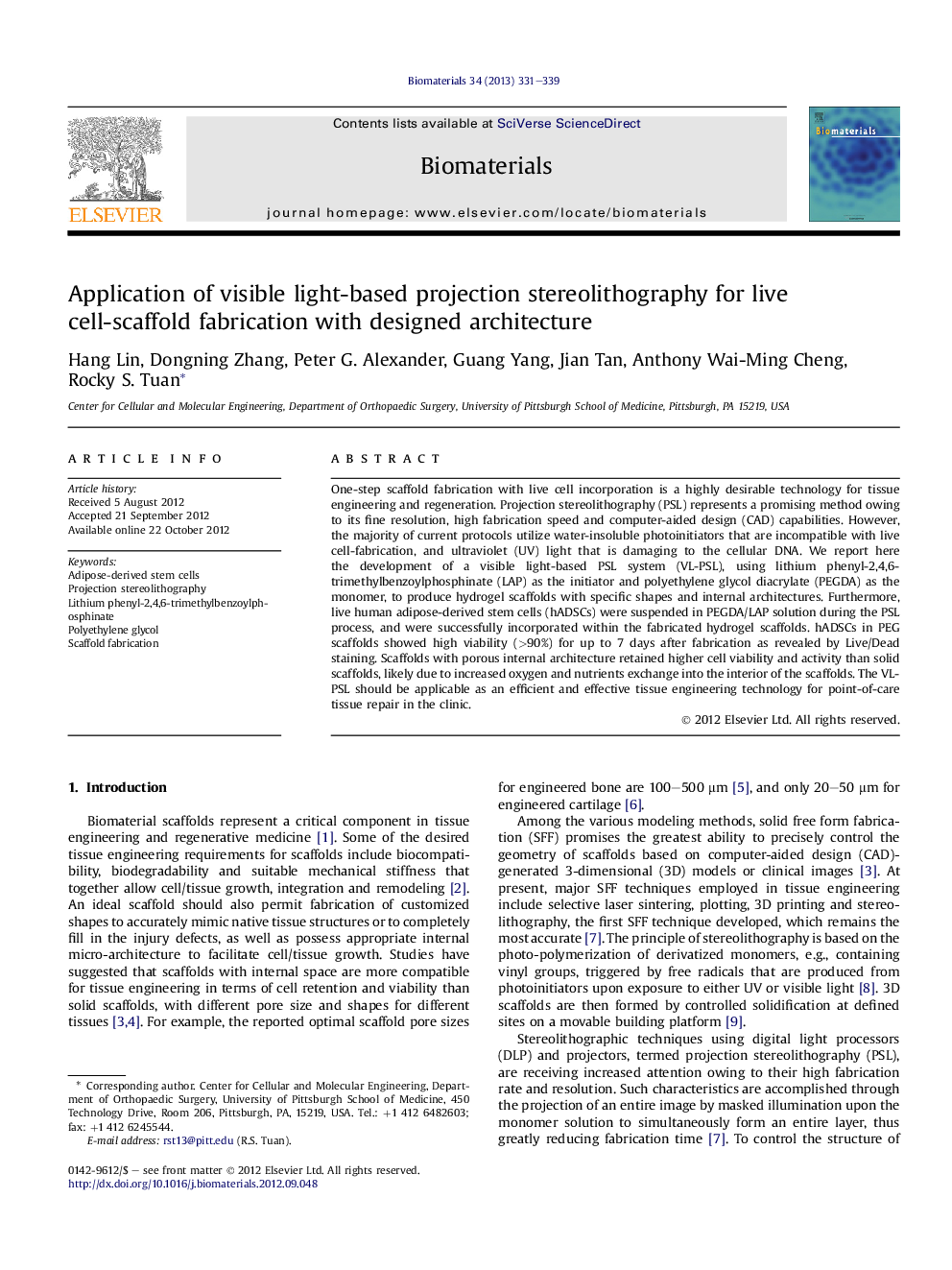| کد مقاله | کد نشریه | سال انتشار | مقاله انگلیسی | نسخه تمام متن |
|---|---|---|---|---|
| 7001 | 528 | 2013 | 9 صفحه PDF | دانلود رایگان |

One-step scaffold fabrication with live cell incorporation is a highly desirable technology for tissue engineering and regeneration. Projection stereolithography (PSL) represents a promising method owing to its fine resolution, high fabrication speed and computer-aided design (CAD) capabilities. However, the majority of current protocols utilize water-insoluble photoinitiators that are incompatible with live cell-fabrication, and ultraviolet (UV) light that is damaging to the cellular DNA. We report here the development of a visible light-based PSL system (VL-PSL), using lithium phenyl-2,4,6-trimethylbenzoylphosphinate (LAP) as the initiator and polyethylene glycol diacrylate (PEGDA) as the monomer, to produce hydrogel scaffolds with specific shapes and internal architectures. Furthermore, live human adipose-derived stem cells (hADSCs) were suspended in PEGDA/LAP solution during the PSL process, and were successfully incorporated within the fabricated hydrogel scaffolds. hADSCs in PEG scaffolds showed high viability (>90%) for up to 7 days after fabrication as revealed by Live/Dead staining. Scaffolds with porous internal architecture retained higher cell viability and activity than solid scaffolds, likely due to increased oxygen and nutrients exchange into the interior of the scaffolds. The VL-PSL should be applicable as an efficient and effective tissue engineering technology for point-of-care tissue repair in the clinic.
Journal: Biomaterials - Volume 34, Issue 2, January 2013, Pages 331–339